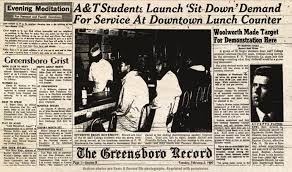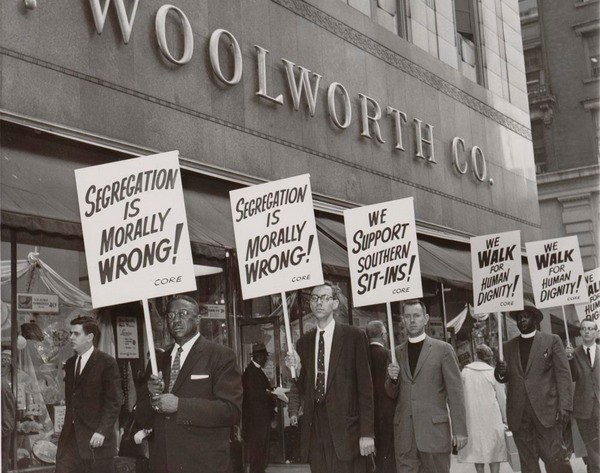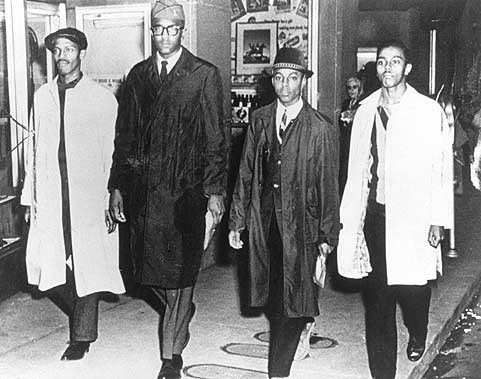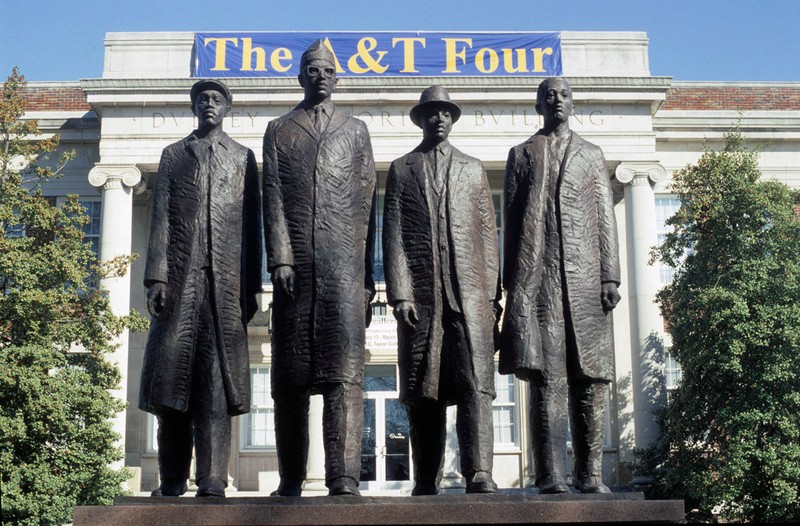Greensboro Four Monument
Introduction
Text-to-speech Audio
Images
Newspaper clipping about the Greensboro Sit-In and the A&T Four

Protesters outside of Woolworths

The A & T Four photographed outside of Woolworth following their first day of protesting segregation.

From left to right: David Richmond, Franklin McCain, Ezell Blair Jr. (he later changed his name to Jibreel Khazan) and Joseph McNeil.

Backstory and Context
Text-to-speech Audio
Although the protesters remained nonviolent, they were often met with violent responses. For example, one white man who saw Black student protesters sitting at the counter at Woolworth’s lit one of their jacket tails on fire. Unlike many of the men and women who harassed the protesters, this man was arrested for his violent actions. In the first days of most of the sit-ins that occurred throughout the South, few of the protesters were arrested. Over time, and as more white residents launched counter-protests, police began arresting the protesters. For example, forty-one Black students in a picket line in Raleigh were arrested for trespassing.
Although most diners and stores in Greensboro and other Southern communities remained segregated in 1960, the protests led to a wave of stores and lunch counters changing their policy. The Greensboro Woolworth ended their policy of segregation a few weeks after the A&T Four began their protest. Within months, hundreds of lunch counters and stores announced plans to serve all customers equally. By 1963, sit-ins at hundreds of restaurants and stores, along with Freedom Rides, petitions, and other demonstrations, had led to meetings between city leaders and members of the Black community. Through direct action and negotiation by civil rights leaders with store owners and city officials, thousands of stores announced plans to end their discriminatory policies. For the rest, the Civil Rights Act of 1964 outlawed racial discrimination in places of public accommodation.
